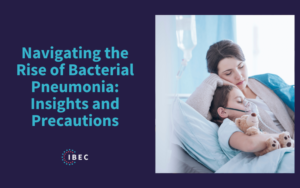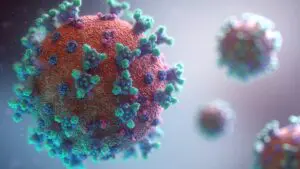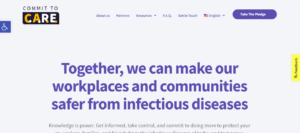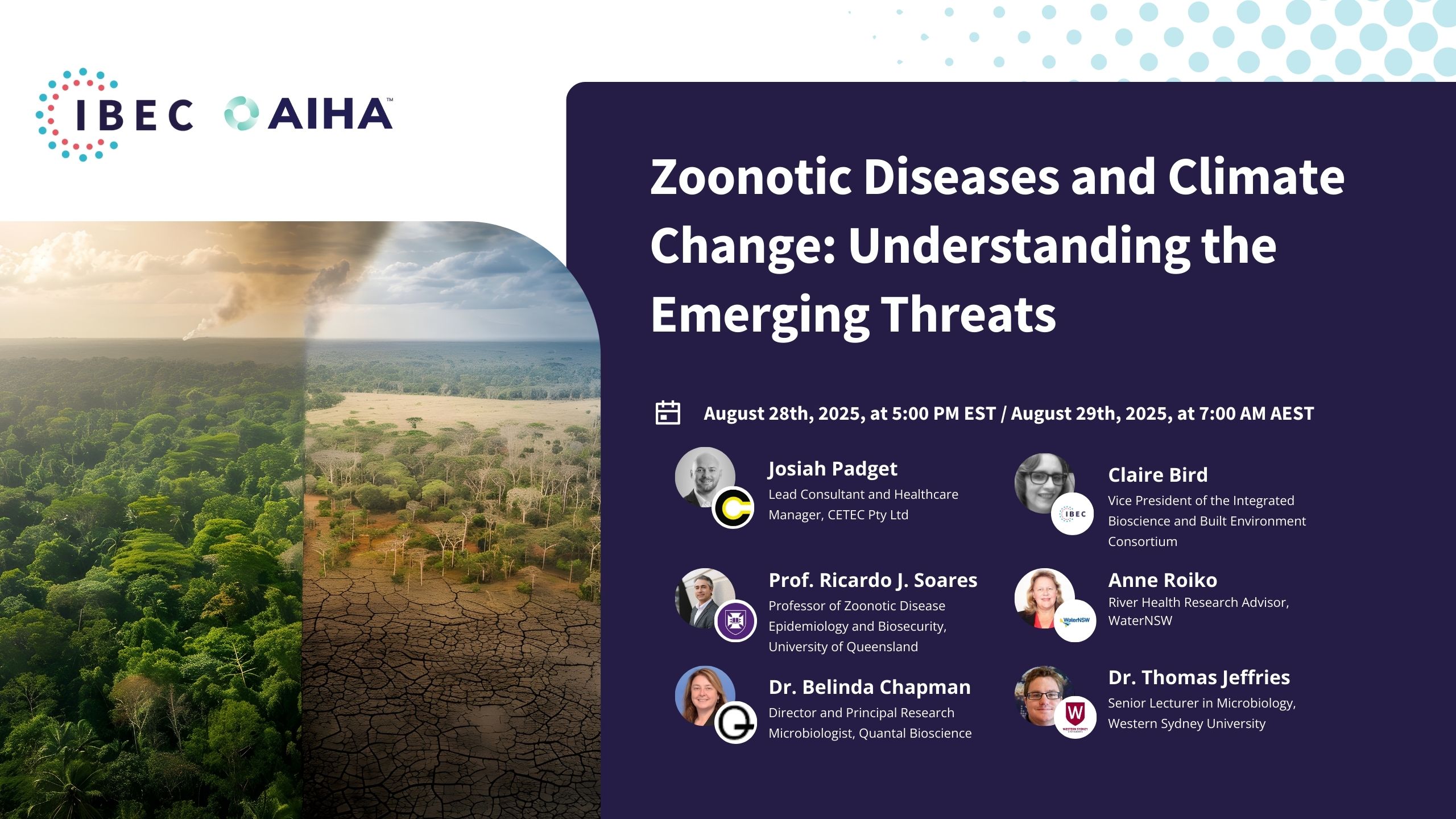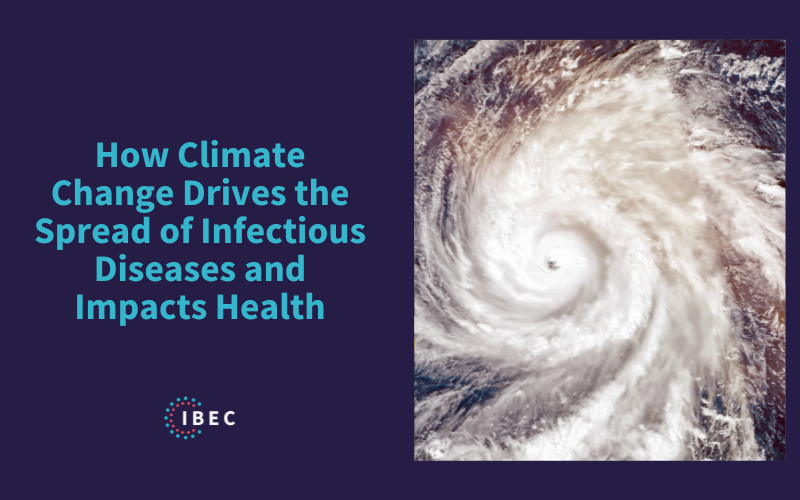
By Stephane Bilodeau, Eng., Ph.D., FEC, Chief Science Officer at IBEC
Climate change is not only an ecological crisis; it fundamentally alters public health dynamics worldwide by accelerating the spread of infectious diseases and introducing them to new regions.
This issue’s urgency is increasing as climate change heightens disease transmission, creating complex health challenges that require a unified, cross-sectoral, and international collaboration.
In light of the World Health Organization’s (WHO) recent call for urgent vaccine development for endemic pathogens—diseases that are evolving alongside shifting climate conditions—the stakes are higher than ever.
This precarity was also emphasized in the November 2024 report of the Lancet Countdown on health and climate change: “Facing record-breaking threats from delayed action.”
Here, I will discuss the pressing issue of climate-driven infectious diseases, focusing on specific diseases expanding due to climate influences, the human toll of this shift, and the essential precautions we must adopt.
How Climate Change Accelerates Infectious Disease Transmission
The scientific consensus points clearly to climate change as a critical driver of emerging and re-emerging infectious diseases.
Rising temperatures, erratic weather patterns, and extreme weather events alter ecosystems and affect pathogen dynamics, creating favorable conditions for vectors like mosquitoes and ticks to thrive in new areas.
Diseases such as malaria, dengue, Lyme disease, and, more recently, COVID-19 and respiratory illnesses are extending into regions previously free of these threats.
Temperature Rise
Warmer temperatures speed up the reproductive cycles and transmission capabilities of disease vectors like mosquitoes, ticks, and certain waterborne pathogens.
Many of these vectors are moving into once inhospitable regions as temperatures become more favorable, bringing diseases into new climates and affecting populations with low immunity and limited preparedness.
Changes in Precipitation
Altered rainfall patterns create ideal conditions for vector-borne diseases to proliferate. Heavy rains lead to stagnant water, a breeding ground for mosquitoes that carry diseases like dengue and chikungunya.
Conversely, prolonged droughts concentrate water sources, leading to higher vector population densities, as seen with outbreaks of West Nile virus in arid regions.
Extreme Weather Events
Climate-related disasters like hurricanes, floods, and wildfires amplify health risks by creating conditions conducive to the spread of infectious diseases.
Such events displace communities, overwhelm public health infrastructure, and increase exposure to unsanitary conditions, facilitating the transmission of waterborne diseases like cholera and respiratory illnesses worsened by pollution. For populations already vulnerable, these events exacerbate pre-existing health challenges and stretch healthcare resources.
From the IBEC perspective, these insights emphasize the need for strategic interventions that address not only immediate outbreaks but also the broader environmental and systemic factors that intensify climate change.
WHO’s Priority Pathogens
An Immediate Need for Vaccines Amid Climate Change
The WHO’s recent study listing top endemic pathogens for urgent vaccine development aligns closely with the diseases impacted by climate change.
These diseases are increasingly influenced by changing environmental conditions and present immediate and long-term threats.
Climate Sensitive Priority Pathogens Identified by WHO
- Dengue Virus
Transmitted by Aedes mosquitoes, it spreads beyond tropical regions as warmer climates support mosquito populations in Europe, North America, and other areas.
The virus can cause life-threatening health outcomes, especially in populations lacking natural immunity. Vaccine development for dengue remains critical as cases rise in non-endemic areas with limited healthcare infrastructure. - Zika Virus and Chikungunya Virus
Both are transmitted by the same vector as dengue, and these viruses expand their range. Zika virus poses additional risks due to its potential effects on fetal health, while chikungunya can cause debilitating joint pain. As with dengue, a vaccine for both diseases is essential to limit their impact on vulnerable communities. - West Nile Virus
Spread by Culex mosquitoes, West Nile virus is now in regions like North America and parts of Europe. Warmer temperatures facilitate its spread, creating a pressing need for a vaccine, especially as climate shifts increase the virus’ seasonal reach. - Malaria (Plasmodium spp.)
Anopheles mosquitoes, which transmit malaria, are now found in higher altitudes and latitudes, areas where malaria was previously rare or nonexistent.
Climate change is expanding malaria risk zones, and although effective malaria vaccines are emerging, broader access and development for various strains remain vital. - Cholera (Vibrio cholerae)
As a waterborne disease, cholera outbreaks are strongly correlated with flooding and unsanitary conditions that arise during extreme weather. Rising sea levels and more frequent natural disasters highlight the urgent need for a widely accessible and effective cholera vaccine.
The Menace of Respiratory Illnesses
On top of those identified by WHO for intensified vaccine development or deployment, SARS-CoV-2 and other respiratory illness pathogens can also be at play. While respiratory diseases like COVID-19 are not solely climate-driven, environmental factors such as wildfires, pollution, and overcrowded shelters due to climate-related displacement increase the risk of respiratory infections.
Climate-induced air pollution, worsened by wildfires and industrial emissions, can compromise lung health, making populations more vulnerable to severe outcomes from COVID-19 and other respiratory viruses.
The Human-Wildlife Link
Additionally, shifting migratory patterns and habitats due to warming temperatures have intensified human-wildlife interactions, raising the risk of zoonotic spillovers, such as avian influenza (H5N1).
Avian flu outbreaks have escalated globally as climate change disrupts natural ecosystems, potentially facilitating mutations that allow these viruses to jump to humans.
These factors underscore the need for strengthened public health infrastructure, surveillance, and global collaboration to address the evolving risks posed by climate-sensitive respiratory illnesses and zoonotic diseases.
Consequences of Inaction
Without action, these diseases will proliferate, affecting populations unequipped to manage the health impacts and placing strain on global health systems.
Outbreaks are costly, especially in low-income countries, via:—
- healthcare expenses
- lost productivity
- increased social inequalities
Vulnerable populations, such as those in rural areas or regions with limited healthcare access, face disproportionate impacts from climate-sensitive diseases, further widening health disparities.
Global Health Impacts and Socioeconomic Consequences
From economic strain to mental health impacts, these diseases fundamentally affect community stability and individual well-being:
- Health Impacts
Climate-sensitive diseases result in significant morbidity and mortality, particularly in communities without prior exposure or immunity.
In areas experiencing newly introduced diseases like malaria or dengue, healthcare systems often struggle to manage the additional caseload. This is compounded by the psychological stress linked to recurring disease threats, exacerbating mental health burdens. - Economic Strain
The financial strain can destabilize entire communities, diverting resources from other essential services and impeding development efforts in vulnerable regions. - Social Disparities
Climate-sensitive diseases disproportionately impact marginalized and low-income communities.
Many of these populations face barriers accessing healthcare, sanitation, and clean water, compounding the risks posed by infectious diseases.
The impact on agricultural communities reliant on climate-sensitive crop cycles intensifies food insecurity, weakening immune systems and amplifying susceptibility to infection.
Precautions, Adaptations, and Global Collaboration
To build resilience against these emerging health threats, IBEC advocates for a suite of preventive and adaptive measures of international collaboration, data-sharing, and policy integration:
- More Surveillance and Data Sharing
Establishing surveillance systems and promoting international data-sharing networks are essential for tracking disease trends and coordinating timely responses. These systems must be accessible to health organizations worldwide to facilitate rapid deployment of resources and information-sharing on vector behavior and outbreaks. - Targeted Vector Control Programs
Community-wide measures to control vector populations are crucial, such as:
insecticide-treated bed nets
biological controls
strategic spraying
IBEC also supports innovation in vector control, including introducing natural mosquito predators and sterile mosquito releases as sustainable alternatives to chemical controls. - Vaccination and Preventive Health Campaigns
The WHO’s call for vaccine development against priority pathogens is critical. Vaccinations are effective againstclimate-sensitive diseases like dengue, Zika, and cholera. - Improved Water, Sanitation, and Hygiene (WASH) Infrastructure
Effective hygiene education plus resilient infrastructures reduce transmission, especially in regions prone to flooding and other climate-related disruptions. - Airborne Precautions and Indoor Climate Management
For respiratory diseases, HEPA filters, masking protocols, and improved ventilation reduce transmission in high-risk environments. These measures in public spaces, especially healthcare facilities, offer protection against airborne pathogens. - Strengthened Global Partnerships and Policy Development
IBEC calls for countries to align their policies to prioritize climate resilience, foster data-sharing, and integrate adaptive strategies in healthcare planning.
The WHO’s focus on climate-sensitive pathogens is a step in the right direction. International institutions and non-governmental organizations play a vital role in coordinating resource allocation and supporting countries most affected by climate-sensitive diseases.
Conclusion: A Unified Global Effort to Combat Climate-Driven Diseases
The connection between climate change and infectious disease represents an escalating global health crisis.
At IBEC, we call upon the international community, policymakers, researchers, and healthcare providers to take coordinated action.
IBEC is ready to actively foster collaboration among a diverse range of experts and stakeholders from around the world, creating opportunities for innovative partnerships and shared knowledge that drive progress and solutions for global challenges.
We must leverage global resources and expertise to strengthen:
- early detection systems
- enhance healthcare resilience
- prioritize vaccine development
- take precautionary measures for climate-sensitive diseases
IBEC remains committed to bridging bioscience and environmental strategies, fostering partnerships, and developing innovative solutions to build resilience against these threats. By acting collectively and decisively, we can address the challenges of climate-driven diseases and protect vulnerable populations, creating a healthier, more resilient world for generations to come.
REFERENCES
Colón-González FJ, Sewe MO, Tompkins AM, et al. Projecting the risk of mosquito-borne diseases in a warmer and more populated world: A spatio-temporal modelling study. Lancet Planet Health. 2022;6(7)
. doi:10.1016/S2542-5196(22)00087-8. Available at: https://www.thelancet.com/journals/lanplh/article/PIIS2542-5196(22)00087-8/fulltext
World Health Organization (WHO). WHO study lists top endemic pathogens for which new vaccines are urgently needed. Published November 5, 2024. Available at: https://www.who.int/news/item/05-11-2024-who-study-lists-top-endemic-pathogens-for-which-new-vaccines-are-urgently-needed
Romanello, Marina et al.The 2024 report of the Lancet Countdown on health and climate change: facing record-breaking threats from delayed action, The Lancet, Volume 404, Issue 10465, 1847 – 1896 https://www.thelancet.com/journals/lancet/article/PIIS0140-6736(24)01822-1/
O’Leary K. Nature Editorial. Climate change cranks up infectious disease impact. Nature. 2022;605(7908):15. doi:10.1038/d41591-022-00085-1. Available at: https://www.nature.com/articles/d41591-022-00085-1
Intergovernmental Panel on Climate Change (IPCC). Climate Change 2022: Impacts, Adaptation, and Vulnerability. “Health, Well-being, and the Changing Structure of Communities” Chapter, Contribution of Working Group II to the Sixth Assessment Report of the IPCC, Published February 28, 2022. Available at: https://www.ipcc.ch/report/ar6/wg2/
Anikeeva O, Hansen A, Varghese B, et al. The impact of increasing temperatures due to climate change on infectious diseases. BMJ. 2024;387
. doi:10.1136/bmj-2024-079343. Available at: https://www.bmj.com/content/387/bmj-2024-079343
Phillips M. Threat of mosquito-borne diseases rises with global temperature. Harvard Gazette. October 2024. Available at: https://news.harvard.edu/gazette/story/2024/10/threat-of-mosquito-borne-diseases-rises-with-global-temperature/
Nguyen D. Ontario must factor infectious diseases into climate resilience law. National Observer. October 23, 2024. Available at: https://www.nationalobserver.com/2024/10/23/opinion/ontario-infectious-disease-climate-change-law-bill-198
Watts N, Amann M, Arnell N, et al. The 2020 report of The Lancet Countdown on health and climate change: responding to converging crises. Lancet. 2021;397(10269):129-170. doi:10.1016/S0140-6736(20)32290-X. Available at: https://www.thelancet.com/journals/lancet/article/PIIS0140-6736(20)32290-X/fulltext
Related Blogposts
IBEC Statement on the Quarantine of Cargo Ship in Argentina Due to Suspected Mpox Case
The recent news regarding the quarantine of a cargo ship near Argentina’s Rosario Port due to a suspected case of mpox underscores the continued global…
Interdisciplinary Collaboration in Environmental Science: Pioneering Health Solutions with IBEC’s New CSO
The Integrated Bioscience and Built Environment Consortium (IBEC) proudly introduces its new Chief Scientific Officer (CSO), Stephane Bilodeau. Bringing over 25 years of diverse experience…
Navigating the Rise of Bacterial Pneumonia: Insights and Precautions
Navigating the Rise of Bacterial Pneumonia: Insights and Precautions As winter’s chill sets in, health professionals and organizations brace for the annual uptick in respiratory…
New COVID-19 Variant JN.1 Raises in the United States
JN.1 is a highly contagious, fast-spreading subvariant of omicron that has become the dominant strain in the country. According to data from the Centers for…
Pioneering Steps to Control Infectious Aerosols: Dr. Claire Bird Offers Expert Insight on ASHRAE’s New Draft Standard
As we navigate through the challenges posed by the COVID-19 pandemic and other airborne diseases, there is a dire need to implement measures that will…
IBEC Takes the Lead in Developing a Framework for Reducing Indoor Pathogen Transmission
Dear IBEC Partners and Supporters, As we continue to navigate the ongoing threat of airborne pathogens transmission in our shared indoor communities, it’s more important…
New Commit To C.A.R.E. Resources Deliver Innovative Indoor Air Quality Solutions for Safer Workplaces
The Commit to C.A.R.E initiative The Integrated Bioscience and Built Environment Consortium (IBEC) and The American Industrial Hygiene Association (AIHA), two leading organizations committed to…
Staying Ahead of Severe GAS Infections and Other Secondary Bacterial Infections
Severe Group A Streptococcal (GAS) infections, including invasive disease (iGAS), can lead to life-threatening illness and death. CDC is looking into an increase in…
Industry Leader L’Oréal Pledges to Support Commit to C.A.R.E.
Industry Leader L’Oréal Pledges to Support Commit to C.A.R.E. With health experts warning of the triple threat of the continued spread of new COVID-19…
C.L.E.A.N. Lessons Learned: How to protect the healthcare system from current and future pandemics
The COVID-19 pandemic caught the world off guard. Health organizations all over the globe rushed into a quick response to protect people from the threat…



